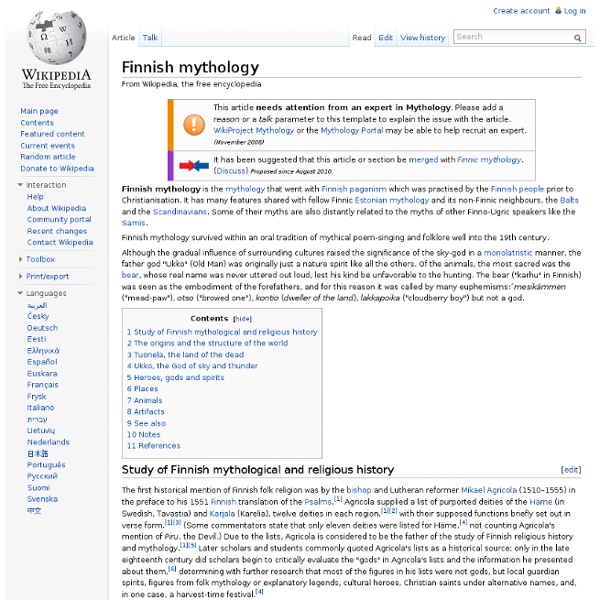Shamanism in Siberia
Northern Asia, particularly Siberia, is regarded as the locus classicus of shamanism.[1] It is inhabited by a variety of ethnic groups, many of whom observe shamanistic practices even in modern times. Many classical ethnographic sources of “shamanism” were recorded among Siberian peoples. These cultures are far from being alike. Terms for 'shaman' and 'shamaness' in Siberian languages[edit] 'shaman': saman (Nedigal, Nanay, Ulcha, Orok), sama (Manchu). Spirit-journey[edit] Siberian shamans' spirit-journeys[7] (re-acting their dreams wherein they had rescued the soul of the client) were conducted in, e.g., Oroch, Altai, and Nganasan healing séances. Songs, music[edit] As mentioned above, shamanistic practice shows great diversity,[2] even if restricted to Siberia. The intention to mimic natural sounds is present in some Siberian cultures as well: overtone singing, and also shamanic songs of some cultures can be examples. Grouped by linguistic relatedness[edit] Uralic languages. Uralic[edit]
Inuit mythology
Inuit mythology has many similarities to the religions of other polar regions. Inuit traditional religious practices could be very briefly summarised as a form of shamanism based on animist principles.[1] In some respects, Inuit mythology stretches the common conception of what the term "mythology" means. Inuit traditional cosmology is not religion in the usual theological sense, and is similar to what most people think of as mythology only in that it is a narrative about the world and the place of people in it. Anirniit[edit] The harshness and randomness of life in the Arctic ensured that Inuit lived constantly in fear of unseen forces. The anirniit are seen to be a part of the sila — the sky or air around them — and are merely borrowed from it. Since the arrival of Christianity among the Inuit, anirniq has become the accepted word for a soul in the Christian sense. Tuurngait[edit] Some spirits are by nature unconnected to physical bodies. Angakuit[edit] Deities[edit] Notes[edit]
Norse mythology
An undead völva, a Scandinavian seeress, tells the spear-wielding god Odin of what has been and what will be in Odin and the Völva by Lorenz Frølich (1895) For the practices and social institutions of the Norse pagans, see Norse paganism Norse mythology, or Scandinavian mythology, is the body of mythology of the North Germanic people stemming from Norse paganism and continuing after the Christianization of Scandinavia and into the Scandinavian folklore of the modern period. Most of the surviving mythology centers on the plights of the gods and their interaction with various other beings, such as humanity and the jötnar, beings who may be friends, lovers, foes and/or family members of the gods. Norse mythology has been a discussion of scholarly interpretation and debate since the 17th century, when key texts were brought to the attention of the intellectual circles of Europe. Sources[edit] Numerous further texts, such as the sagas, provide further information. Mythology[edit]
Sami shamanism
Animal spirits[edit] Aside from the Bear Cult, there are other animal spirits such as the Haldi who watched over nature. Some Sami people had a thunder god called Tiermes, sometimes called Horagalles. The forest-god of the Sami, Laib olmai ruled over all forest animals, which were regarded as his herds, and luck in hunting, or the reverse, depended on his good will. Sieidis[edit] In the landscape throughout Northern Scandinavia, one can find sieidis, places that have unusual land forms different from the surrounding countryside. The clan and family gods of the Sami are known in different parts of Sapmi under the name of Seita, Sieidis or Storjunkare. Noaide[edit] A noaidi was a mediator between the human world and saivo, the underworld, for the least of community problems. Elements of Norse mythology as well as Christian ideas are found in the later practices. Sámi peoples in northern Scandinavia today belong to Christian churches. Ancestors[edit] Deities[edit] See also[edit]



